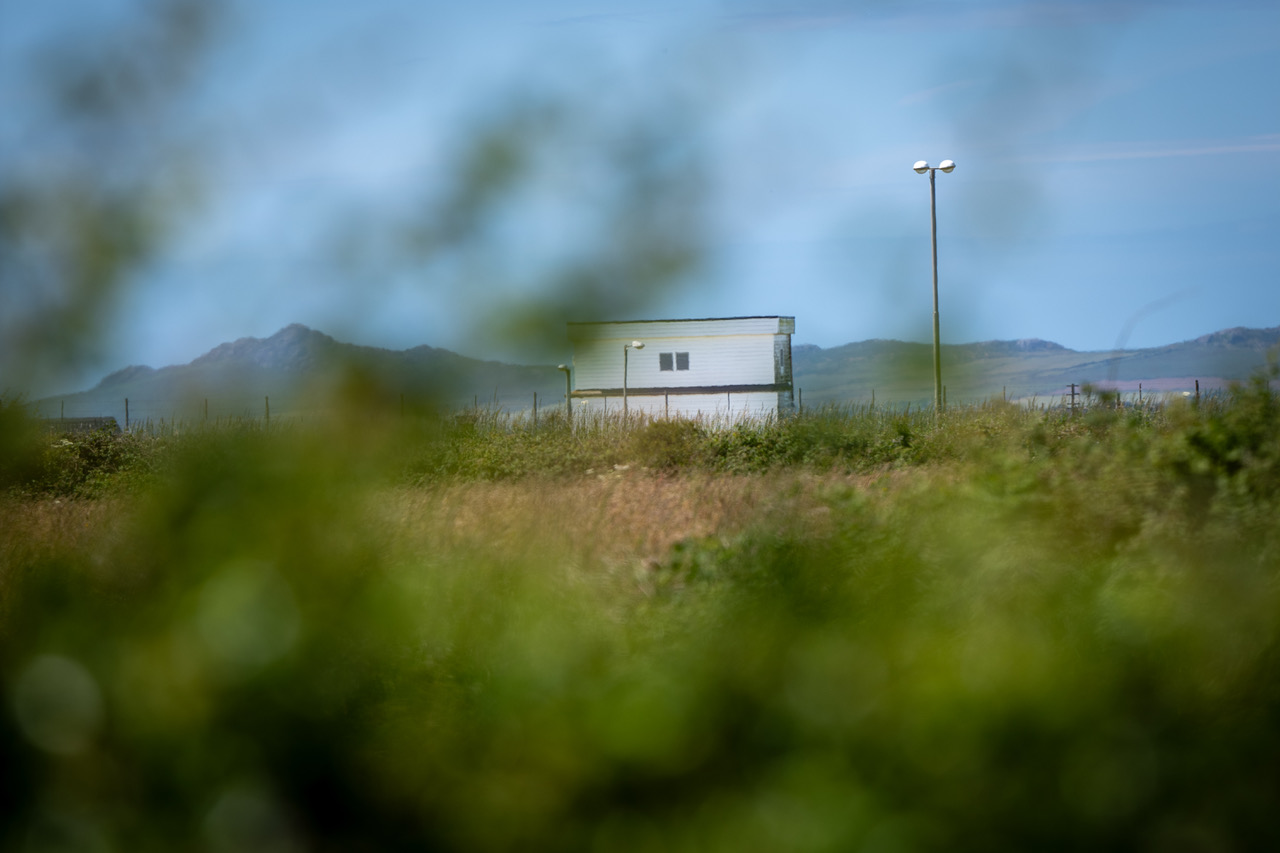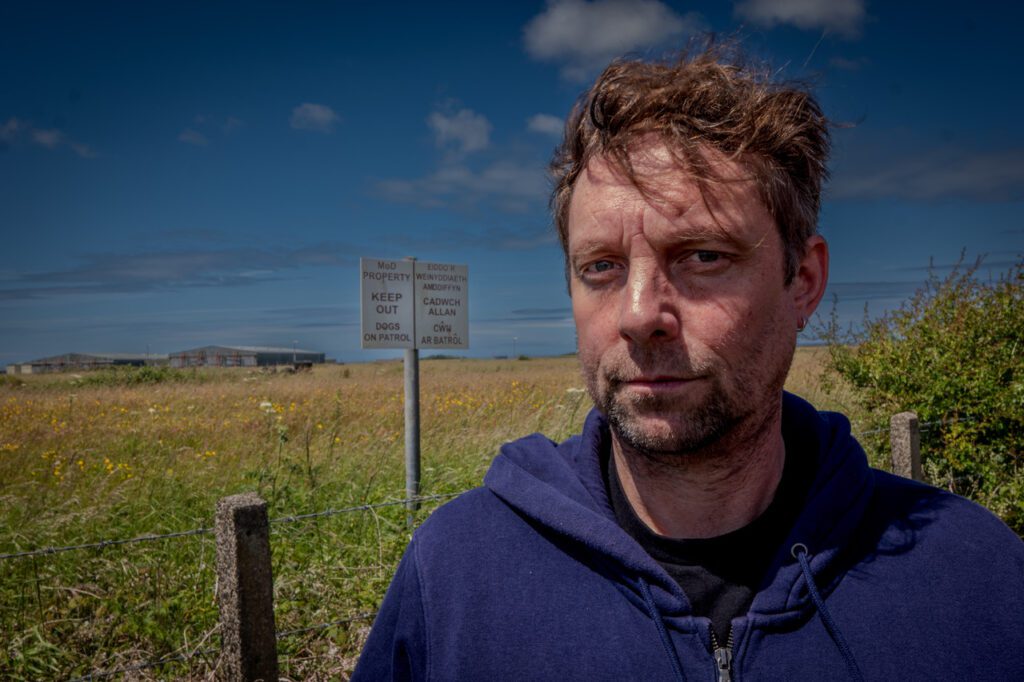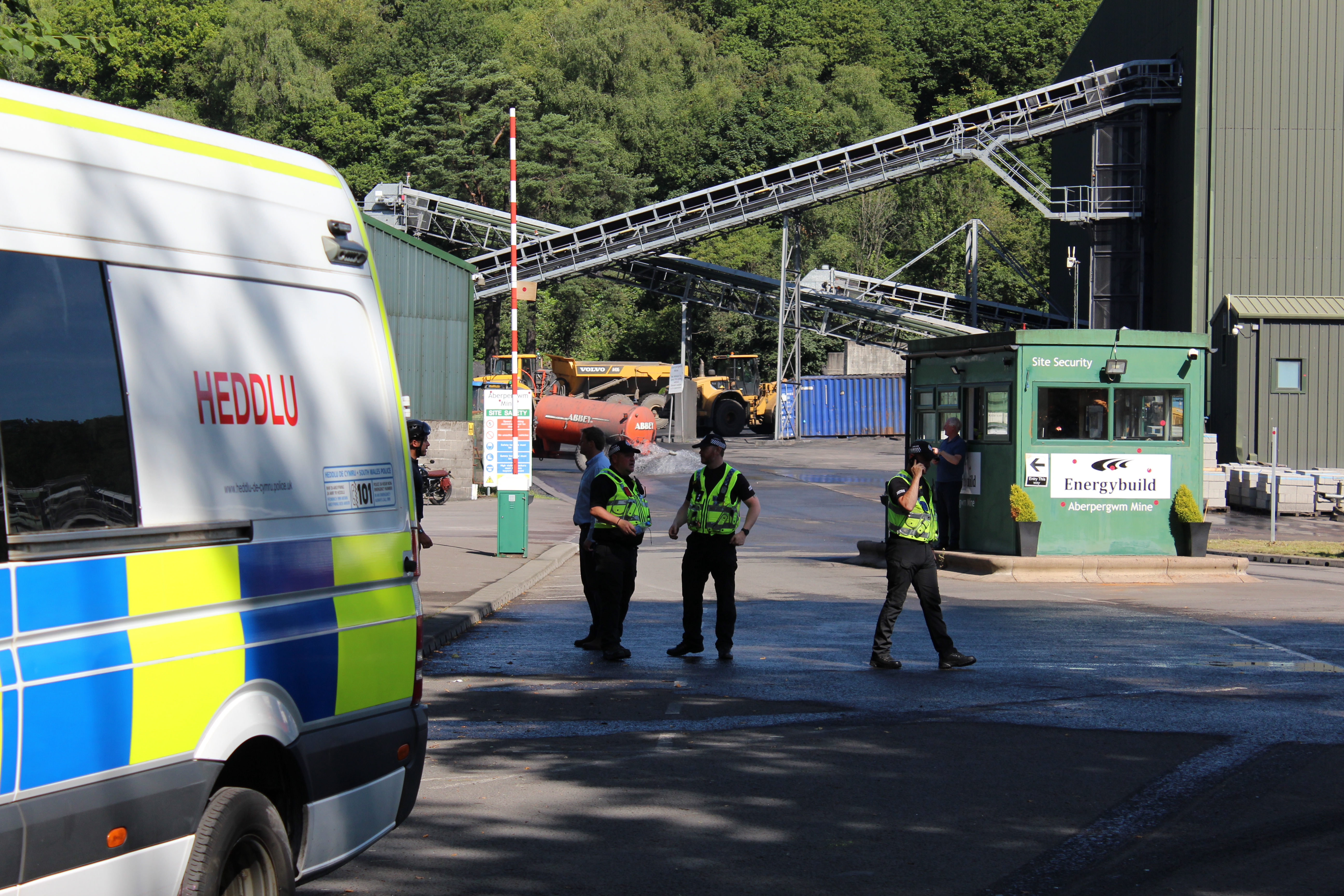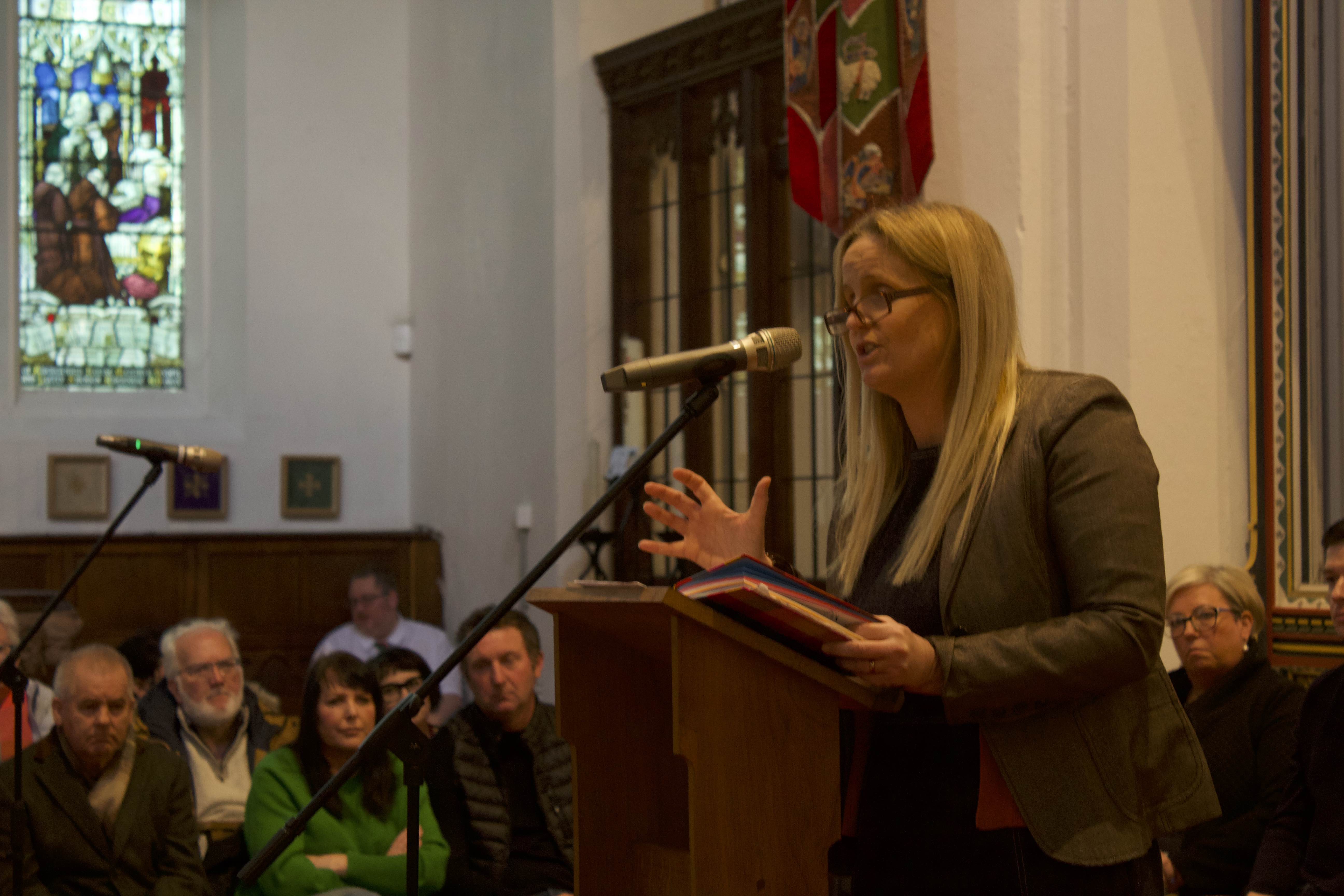
Why Does The US Military Want To Put A Giant Radar Next To A National Park?
When the UK Government signed up to a new military alliance with the United States and Australia in 2021, residents of the St David’s peninsula in West Wales might have thought that the news had little to do with them. But a few years later, they find themselves locked in a battle to stop almost thirty giant space radars towering over their historic landscape.
By SC Cook. Cover image: The proposed site for DARC in Brawdy, photo credit, garyroberts/worldwidefeatures.com
In early December 2023, a seemingly innocuous report appeared in one of Wales’s most visited news sites.
The article in Wales Online was about a “New deep space radar” that would apparently protect the UK from “space warfare.’” It was to be built near the popular Newgale beach and pristine coastline of the Pembrokeshire National Park.
According to the author, this radar would be able to “characterise objects deep in space up to 22,000 miles away from earth,” “boost” the local economy with job creation and finally to “monitor and protect the essential services that rely on satellites in space, including everyday aspects of life such as communications and navigation.”
There were glowing quotes from the then Defence Secretary, Grant Shapps, and Secretary of State for Wales, David TC Davies, who called it “fantastic news.”
The article – in all likelihood just a reprinted press release from the Ministry of Defence – was only brief. It contained no criticism whatsoever of the plans, and very little detail on what they would entail for the local population.
But it hardly mattered. When locals got wind of the truth, they were packing out their community halls in opposition and planning ways to halt the “new deep space radar” coming anywhere near them.
Because what the article didn’t reveal was far more significant than what it did. Specifically, that the ‘fantastic news’ would actually mean the building of a 27-dish radar network, each standing over 20 metres high and 15 metres wide. In an area sought after for its immense natural beauty, the radar station would take up an area the size of ten football pitches and stretch as high as a multistorey building.
The health effects of the cumulative radiation produced are completely unknown, but local campaigners fear the worst. Of course, none of this was mentioned in the article – itself an indictment of the state of journalism in Wales today.
The radar plans are part of a new military pact between the US, UK and Australia known as AUKUS, launched in 2021. Its initial stated aim was to develop nuclear powered submarines that would help the United States dominate the Indo-Pacific ocean against a rising Chinese presence.
So what does Pembrokeshire, and the small communities of Newgale, Brawdy, Penycwm, Roch and Solva have to do with imperialist rivalry in the Indo-Pacific ocean?
The answer lies not in the depths of the sea but high above the sky. Because the United States does not just want to police the ocean, it wants to control space too.
You only have to listen to what its highest ranking military officials have to say about the plans.
“The Deep Space Advanced Radar Capability will leverage the geography of the United States, Australia, and the United Kingdom to further enhance our collective space domain awareness: the ability to track, identify and characterise space objects. Space domain awareness…is essential for responding to activity in space, whether that activity is routine or hostile,” said U.S. Assistant Secretary of Defense for Space Policy, Dr. John Plumb, sounding like a character from the film Starship Troopers.
The Deep Space Advanced Radar Capability, or DARC as it’s more commonly known, is set to have one site in each of the three states signed up to the AUKUS pact.
The other sites are in Exmouth, North West Australia, and in Colorado Springs, United States.

The site earmarked for Wales is currently the Cawdor army barracks in Brawdy, just a mile or so from the popular Newgale beach. If it goes ahead, it would be developed by the US based multinational defence and aerospace corporation, Northrop Grumman.
The Brawdy development is thought to be worth $200m dollars to the firm. The third largest military contractor in the world with an annual turnover in excess of $30bn, Northrop Grumman has also been identified a supplier of arms used by Israel in the genocide of Palestinians in Gaza.
Of course, this isn’t the first time that communities in Wales have been made to play host to the British military and its allies. In fact, according to Natural Resources Wales the MOD is “one of the largest landowners in the country.”
Not too far from Brawdy is Parc Aberporth, an ex-military base that now serves as a technology park run by QinetiQ, one of Britain’s biggest private arms companies, and is used to test killer drones over Welsh airspace, despite opposition from local residents. One of those drones is the Watchkeeper which is used by Israel against Palestinians.
The site has faced ongoing protests for its involvement in the mass killing and ethnic cleansing of Palestinians by Israel over the past year and more.
Ordinary people are supposed to put up with this kind of infrastructure, or even welcome it as some kind of national duty. That was clearly the intent of the MOD press release re-published by Wales Online.
But for many people in Brawdy and the surrounding area, no amount of PR and flag waving will convince them that 27 huge radars sent by the US military are of benefit to them or the wider world. So it was then that a fierce local campaign took off.
Pembrokeshire Against the Radar Campaign, known as PARC Against DARC, quickly amassed over 15,000 signatures to a petition demanding the radar plans were dropped. A broad coalition of individuals and organisations, from trade unions to local businesses, joined the opposition.
In July at a public meeting in Solva – a popular harbour town just a few miles from the proposed development – there was standing room only as people lined the walls of the town hall to figure out how they were going to stop the radars being imposed on their community.
Whilst there they heard from global experts on radiation and medical science, Dr. Michael Peleg and Dr. Paul Héroux. The pair delivered a presentation on what they said was the cancer-causing effects of Israel’s Iron Dome military radar system, which is very similar to the proposed DARC plans, and the physics of how non-ionising radiation at high power densities negatively impacts the human body.
Another expert said that DARC’s brightly lit night lights would disrupt the flight path of the Manx Shearwater, one of Pemborkeshire’s most significant bird species, and threaten the population as a whole. A local hotel owner warned about the devastating effects it could have on tourism in the area.
The PARC campaign goes back a long way. The original Pembrokeshire Against the Radar campaign was set up in 1990 against plans for a similar, large-scale MOD radar station close to Cawdor Barracks. The fight was successful and the plans were scrapped. The campaign slowly wound down but never faded from memory.
The PARC of today is all too aware of its history. When people gathered for a packed out meeting in Solva, it was in the exact same town hall as had been used in 1990. They even recreated the same image of rows of local people holding signs aloft reading ‘No Radar.’
“It’s a threat to the local community, but it’s also a threat to Wales and to the world,” says Jill Evans of the Campaign for Nuclear Disarmament in Wales, one of the backers of the campaign now and back in the nineties. “It’s an attempt to control things happening in space, and that’s not something we want Wales to play a part in. We want to build Wales as a nation of peace. It’s unacceptable.”
There are a whole variety of reasons why locals are against the plans, but the opposition appears widespread.
In responses to a consultation over the plans, people cited everything from the visual impact to health and light pollution. Several messages also referenced the spiritual history of the St David’s peninsula.
“The St Davids Peninsula is not the right place for DARC,” wrote one resident from Roch. “It is a place of peace, a place of pilgrimage, steeped in Christian religious significance.”

But the idea that this rural corner of Wales is being forced to play its part in the militarisation of space has created its own bizarre reality.
In mid September, a London based PR firm called Cascade was contracted to organise public meetings in St David’s and Solva, most likely in response to the huge outpouring of opposition.
The events were attended by top MOD officials who looked like they had just walked off a film set. UK military chiefs even handed out little stickers to those who attended which read “United Kingdom Space Command,” as if the Pembrokshire locals were being recruited to a new cosmic army squadron.
But things quickly became even more strange and alarming.
A local campaigner, Jim Scott, said that one attendee had told him that when they’d asked one of the military officials present if he’d stand next to one of the radars himself, he replied, “No, I wouldn’t stand next to one of these radars myself; it’d be like putting my head in a microwave.”’
When invitation letters were sent out to locals advertising what were called ‘public engagement events’, the place names of Newgale, Middle Mill and Penycwm had been replaced by ones that no one recognised. They had become “Newgate,” “Middle Hill” and “Penycwn” instead.
When challenged as to why this wasn’t corrected, one official at the meeting simply replied: “We could have done, but there wasn’t any point.”’
When pressed about the potential health impact and any assessments that had been done around this, they said that the MOD could not give out this information because it was “operational,” and added that it may never be released publicly.
Another attendee was told by officials that they ‘didn’t know’ if there would be 120 heavy goods vehicles per day pounding the local roads during the construction phase. When asked how the visual impact of 27 giant radars would be mitigated, military representatives put forward the idea of growing extra high hedgerows. These might need to be as tall as a four storey building.
Questions about the impact on birds and wildlife, radiation levels and power supply were met with “we can’t answer that” or “we don’t know yet,” exasperated campaigners said.
“We asked several other key and extremely important questions, as did so many who attended the events,” said Jim Scott. “We couldn’t find anyone who had come out satisfied with the answers they’d received. Many people came out baffled, feeling the consultation was rushed, poorly-informed and confusing. They told us they’d heard contradiction after contradiction, felt that MOD spokespeople came across as evasive and defensive, and some even felt they had been lied to.”
Following the events, members of Plaid Cymru overwhelmingly adopted an anti-DARC motion at their annual conference, committing the party to campaign against the plans. With the Green Party also on board and pressure growing on the Lib Dems, the campaign hopes the issue will become a feature of the 2026 Senedd elections.
Afterall, the issue gets to the heart of what democracy should be about. If the majority of local people don’t want the radars, and neither do their elected representatives, on what grounds can they be forced to accept them?
So far Welsh Labour have been tight lipped about the issue and will no doubt try to avoid it altogether, especially given that the new UK Labour government is now chiefly responsible for the plans.
The new Defence Secretary, Labour’s John Healey, sounded just like his Tory predecessor when he said the plan “secures jobs at home and defence capabilities for the future.” and would “protect our space assets alongside our closest partners.”
But for many locals, the gap between their own lives and the interests of DARC couldn’t be further apart. And as more people become aware of the plans, the level of outrage only grows more intense.


